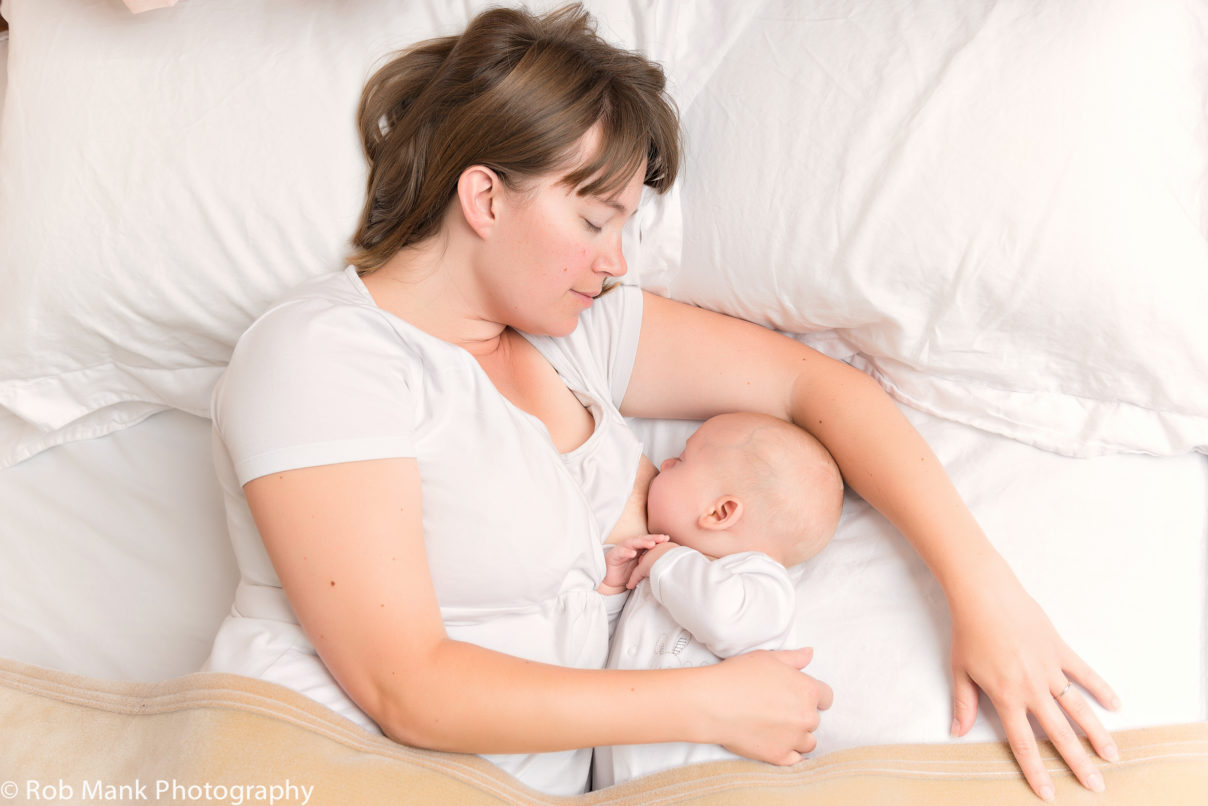Bed-sharing and breastfeeding
Bed-sharing and breastfeeding

First-time parents are often unprepared for the frequency with which their breastfed newborns need to feed, or how long night-time breastfeeding is likely to continue.
Breastfed babies are generally still feeding as frequently throughout the night at 3 months of age as they were at 1 month (Elias et al 1986; Ball 2003). However, researchers have found that frequent night waking is a factor contributing to the introduction of formula milk to babies, thereby undermining breastfeeding (Pinilla & Birch 1993; Marchand & Morrow 1994; Greenslade 1995; Ball 2003) given the common (but no longer valid) perception that formula use promotes infant sleep.
For those committed to breastfeeding, sleeping with their babies becomes one of the means by which mothers cope with frequent night-time feeding.
A study of 253 families in the North-East of England reported that mothers who started bed-sharing in their babies’ first month of life were twice as likely to still be breastfeeding when their baby was 4 months of age, in comparison with women who breastfed their baby in the absence of early bed-sharing (Ball 2003). Other studies have found similar results (Blair and Ball 2004; Clements et al 1997; Elias et al 1986; Ford et al 1994; McCoy et al 2004; Mitchell & Scragg 1994; Rigda et al 2000; Quillin and Glen 2004; Baddock et al 2007, Santos et al 2009) confirming that bed-sharing is an important night-time care strategy in the context of breastfeeding.
The NECOT trial found that participants who reported bed-sharing in the first 13 weeks postnatally were half as likely as those who had reported no bed-sharing to have ceased breastfeeding at any given point (Ball et al 2011). In the US Huang et al (2013) found that, after adjusting for covariates, longer bed-sharing duration was associated with longer duration of any (but not exclusive) breastfeeding.
Although it is not possible to say that bed-sharing causes women to continue breastfeeding it seems likely that positive feedback exists, and the two behaviours are mutually reinforcing. Bed-sharing facilitates frequent feeding which supports milk supply, while breastfeeding increases the oxytocin in the mother’s blood and milk, reducing mothers’ blood pressure (Jonas et al 2008) and inducing sleep for both mother and infant (Stuart-Macadam & Dettwyler 1995; Hrdy 1999). Bed-sharing breastfeeding mothers cope more easily with frequent night time feeds, getting more sleep and continuing to breastfeed for longer. McKenna and Gettler (2014) have termed the combination of bed-sharing and night-time feeding ‘breast-sleeping’.
Bed-sharing inherently puts mothers and babies in close body contact; a condition which anthropologists and others consider to be the evolutionary ‘norm’ for human infants (more information here). Bed-sharing has numerous benefits identified by researchers, and by parents who choose to bed-share (Ball 2002, Ward 2015, Mileva-Seitz et al 2017, Barry & McKenna 2022). The flip-side of these factors are the risks or drawbacks associated with separate mother-baby sleeping.
But remember, bed-sharing is not a risk-free activity, and no studies have found that the parents’ bed is safer than a cot beside the parents’ bed.
It is vital that health professionals inform parents of how their individual circumstances affect risk, the magnitude of their personal risk-related behaviours, and how these may change from night-to-night. Parents also need to know about the risks and consequences of alternate infant sleep locations, some of which (such as sofas and recliners) can be more hazardous than bed-sharing. Warn parents that they might sometimes fall asleep with their baby in hazardous ways without meaning to, and should plan ahead to ensure they understand and can use the safest options available to them. Offer all parents the tools to arrive at an informed decision about whether or not to bed-share with their infant at any given time.
